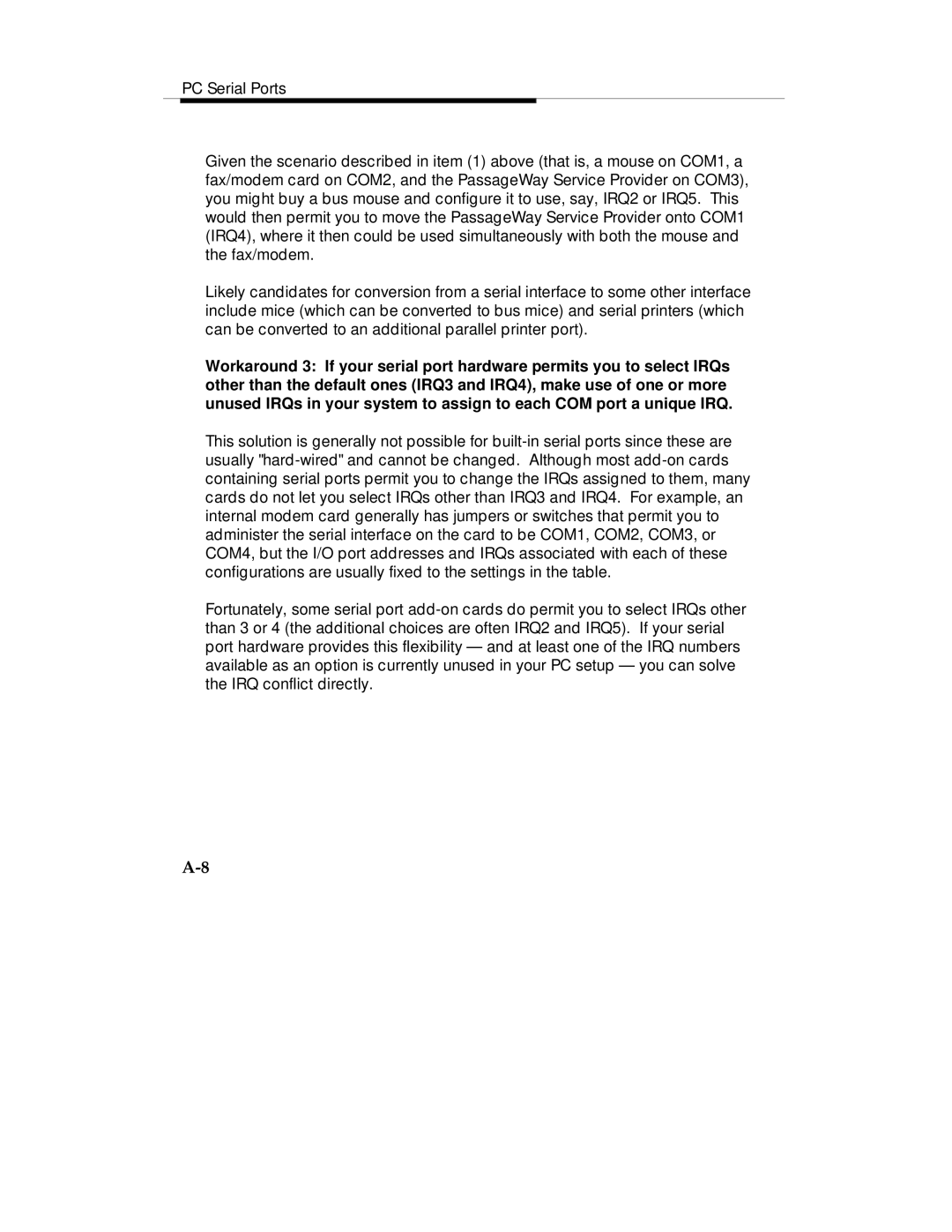PC Serial Ports
Given the scenario described in item (1) above (that is, a mouse on COM1, a fax/modem card on COM2, and the PassageWay Service Provider on COM3), you might buy a bus mouse and configure it to use, say, IRQ2 or IRQ5. This would then permit you to move the PassageWay Service Provider onto COM1 (IRQ4), where it then could be used simultaneously with both the mouse and the fax/modem.
Likely candidates for conversion from a serial interface to some other interface include mice (which can be converted to bus mice) and serial printers (which can be converted to an additional parallel printer port).
Workaround 3: If your serial port hardware permits you to select IRQs other than the default ones (IRQ3 and IRQ4), make use of one or more unused IRQs in your system to assign to each COM port a unique IRQ.
This solution is generally not possible for
Fortunately, some serial port
